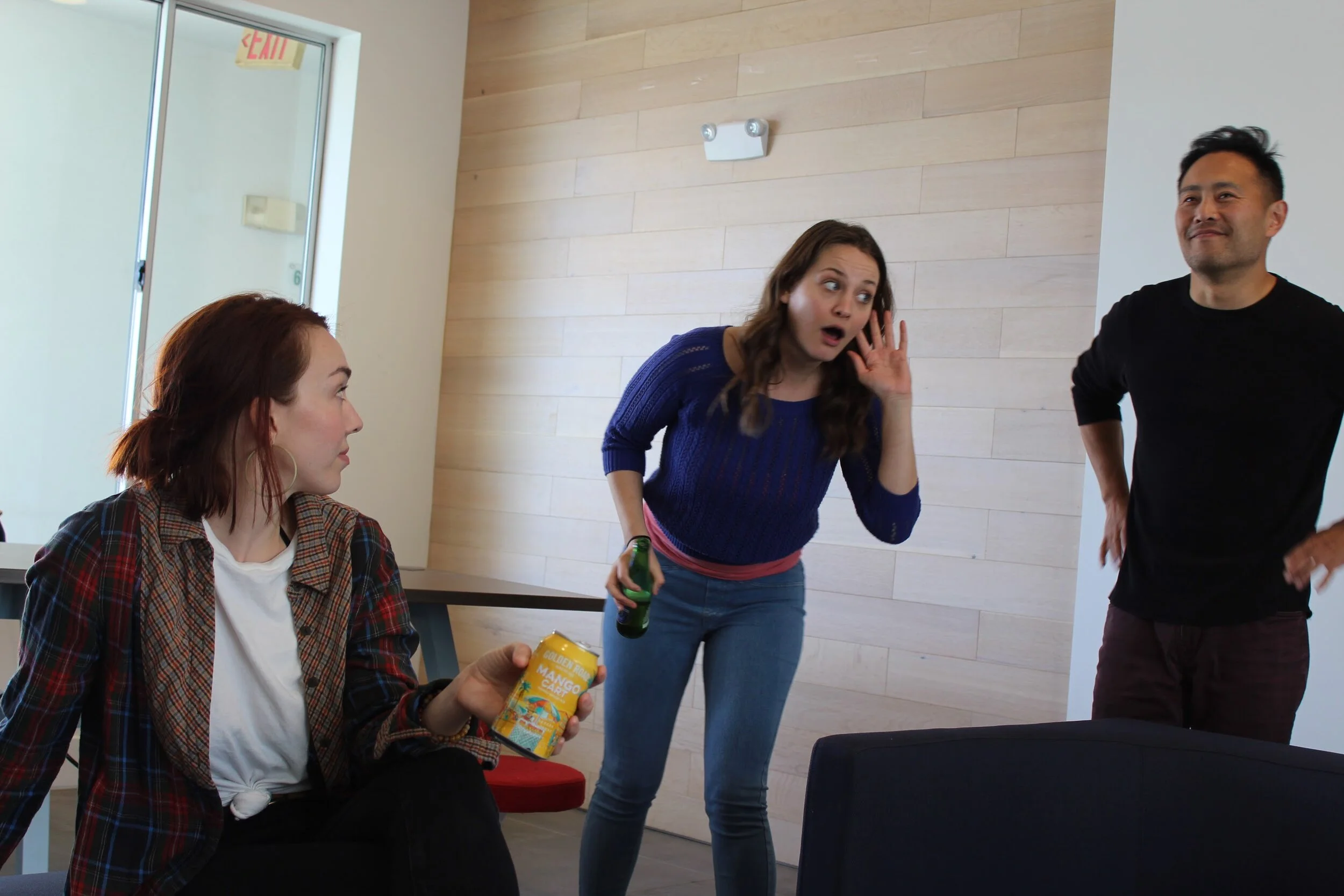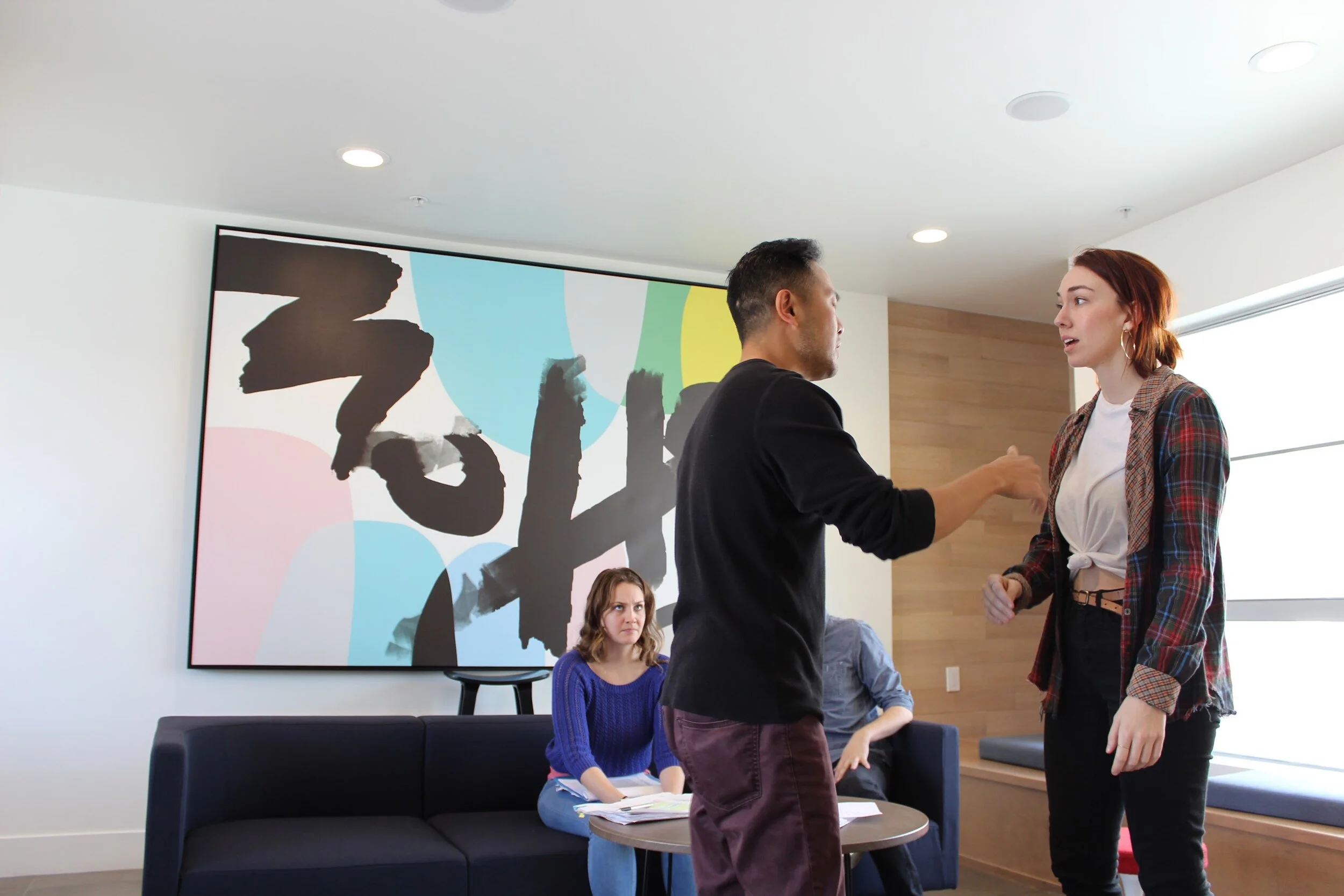Upgrading the Action: Continuing Creativity During Middle Rehearsals
My directing craft works with the actors to form a strong foundation through tablework and initial staging. Through clarifying beat transitions and determining the characters’ actions at the beginning stages, the actors and I arrive at a draft of the play.
With this foundation in place, we could in theory perform this play. However, the artists involved have made a commitment to strive for layered, compelling storytelling.
We then enter the middle rehearsal period with the goal of finding where we can enhance the storytelling. With the structure and framework in place, we then begin to work beat by beat and find opportunities to upgrade the character’s actions.
The middle rehearsal period is a sweet spot of the process where the cast is more familiar with one another and possess a deeper grasp in crafting their characters. We then must capitalize on that excitement and sense of accomplishment to spark creativity within the actor to upgrade and strengthen actions.
Know what it looks like when you win.
A character’s action is wanting the other actor to do something. The need to continue pursuing that action comes from the other actor giving or not giving you what you want.
We must interpret the text where the actor needs something from the other person in order to do the the next action. Invite the actors to imagine the look on the other actor’s faces when they’ve gotten what they want. Have you won because your partner smiled? Are they shocked? Are you satisfied with that amount of shock? Do you need MORE shock from them?
Create an expectation of what winning looks like. With each line, if you don’t get it, then we must try a new tactic until we get what we want or the text introduces new information and changes what we want.
Asking the actor to accomplish their action based on a physical response in their scene partner focuses all tactics on evoking that response.
The actor may discover the action chosen at tablework is not specifically focused enough on the scene partner. For example: I want to seduce him. A strong verb and playable action, but how does the actor know they’ve seduced their scene partner?
We then begin to upgrading the action by making it about a physical response in the other person. I want to seduce him could become I want to seduce him to kiss me. Now the actor knows if they win with a specific expectation. You either get the kiss or not.
Actions that try and change other people lead to richer storytelling.
Seminar by Theresa Rebeck | Flat Tire Theatre Company
Challenge our patterns.
Patterns are natural. We all have ways we prefer to approach tasks or challenges. We likely cast someone in a role based on the way they approach the character’s challenges in the play.
Approaching every obstacle the same way, can lead to a stale performance. The middle rehearsal period becomes about identifying and challenging our actor’s patterns. How is this beat different from the last? Why is it that you want to kiss him at the beginning and the end, is there a point where you arrive at that?
An engaging beat transition escalates the conflict.
When a transition between beats seems stale, the solution lies not in the text but in the actor exchange. Invite the actors to listen to what their scene partners are saying and how those specifics impact you.
Each beat transition is an opportunity to create a more varied, compelling, ever-changing story. Let’s encourage the actor to ground transitions in the moment-to-moment with a partner by coming with new ways to liven the situation.
Raising the stakes.
As actors become familiar with the text, the stakes can naturally dwindle during the middle rehearsal period. Without a strong desire from the actor to continuously try new tactics to get what they want, interest and tempo will suffer.
We must use this period to continuously raise them and encourage the actor to find new ways to urgently achieve the objectives.
Discuss the consequences for achieving or failing each action? Encourage the actor to imagine the darkest timeline for failing and imagine the ideal timeline for succeeding. Having a clear juxtaposed sense of failure and success will motivate the actions from preventing the darkest timeline from coming to fruition.
Harnessing the first-time experience makes a situation arousing, unique, and unrepeatable. We as humans do not typically handle situations the best if it is the first time we are experiencing it. The stakes naturally become more urgent from reminding of feelings of fight flight and simulating that the actor is fighting for their life.
Adding a time limit to achieve the action quickly enhances the stakes. Maybe someone can enter the room at any minute. Maybe you need the information before you leave or you can never find out.
Seminar by Theresa Rebeck | Flat Tire Theatre Company
Break through the obstacles.
It should not be easy for the actor to get what they want. Ask the actor what is preventing them from accomplishing their goal and what they have to do to overcome it.
Obstacles create a variety in the story, forcing the actor to employ a deep set of tactics to achieve their goal. Diving deeper how to overcome to obstacle also promotes a series of tactics that can be applied to the action.
I encourage the actor to use obstacles that involve the scene partner to further ground the action in needing to change the other person. Is the other actor physically in your way and you need something behind them? Do you need a favor from the other actor and will only comply if there is something in it for them?
You may discover the present action is not strong enough to get through the obstacle inviting the room to upgrade the action to break through. Or you may discover that the present action steamrolls over the obstacle and the action runs out quicker than you run out of line inviting the room to look for stronger obstacles to encourage a wider range of tactics.
All actors are unique in their approach to crafting a character. And all actors will naturally find a moment that they do not naturally or instinctually identify with.
My directing craft admits that all artists have specialized creative influences and we cannot use a one size fits all approach with everyone.
The middle rehearsal period provides a series of strategies to learn how different actors will respond to different methods. I work to equip my toolbox to unlock creativity with the actors depending on how each one approaches the scene.
I work to use the actor’s innate creativity to liven and strengthen the play.
Cool resources:
Thinking Like a Director by Michael Bloom | Backwards and Forwards by David Ball

